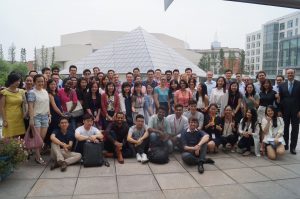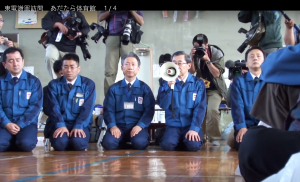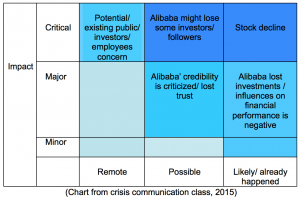by Helio Fred Garcia
To my Students: A Fourth of July teachable moment on framing — starting with why — and career management, on the 240th birthday of the United States of America.
On June 7, 1776, the Second Continental Congress, meeting in Philadelphia, voted to separate from England; our own Brexit.
It passed a resolution put forward by Richard Henry Lee of Virginia, declaring, in part: “These colonies are, and of right ought to be, free and independent states.”
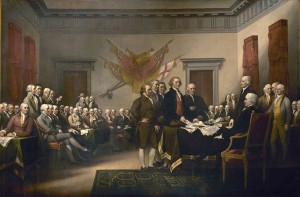
The Declaration of Independence, by John Turnbull
Who Writes The First Draft?
On June 11 Congress named a committee, known as the Committee of Five, to write the announcement. That committee included John Adams of Massachusetts, Ben Franklin of Pennsylvania, Roger Sherman of Connecticut, Robert Livingston of New York, and Thomas Jefferson of Virginia.
The committee initially asked Adams to write the first draft. But Adams, 41, considered himself a statesman and thought the work beneath him. So he suggested that Jefferson, 33 and a rising star, take the first draft.
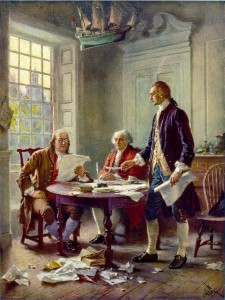
Writing the Declaration by JLG Ferris
According to the biography John Adams: A Life by John Ferling, Jefferson was confused by Adams’ suggestion:
“Jefferson asked, “Why will you not? You ought to do it.”
To which Adams responded, “I will not – reasons enough.”
That didn’t satisfy Jefferson, who insisted,
“What can be your reasons?”
And Adams responded, “Reason first, you are a Virginian, and a Virginian ought to appear at the head of this business. Reason second, I am obnoxious, suspected, and unpopular. You are very much otherwise. Reason third, you can write ten times better than I can.”
Adams may or may not have been sincere.
Jefferson yielded.
“Well,” said Jefferson, “if you are decided, I will do as well as I can.”
Adams concluded, “Very well. When you have drawn it up, we will have a meeting.””
There is no evidence that such a meeting took place. There is evidence that Franklin, then in his 70s, edited Jefferson’s draft carefully.
Start With WHY
So Jefferson took on the task. But instead of simply listing the grievances against the King, Jefferson, who knew a lot about persuasion, decided to start with WHY — First, with a meta-WHY, why a Declaration of Independence, as opposed to simply an account of the vote? And second, the WHY of separation.
First, WHY the Declaration: Jefferson wrote that in such circumstances,
“a decent respect to the opinions of mankind requires that they should declare the causes which impel them to the separation.”
A Decent Respect for the Opinions of Mankind
Think about that for a moment: A DECENT RESPECT for the opinions of mankind. That’s the foundation of public relations — and of all civil government. This usually-overlooked opening to the Declaration is in many ways as important as what follows. It creates accountability and sets a standard — what reasonable people would appropriately expect a responsible provisional government to do when it decides to leave.
Second, WHY the separation: First principle: All are equal. Second principle: Fundamental rights are life, liberty, and pursuit of happiness. Third principle: Government exists to secure these rights.
Move to HOW
And then the HOW: When government fails to do so, it is the right of the people to alter or abolish that government.
Heady stuff.
Of course, it was more aspirational than normative, as Lincoln pointed out 87 years later. We’re still trying to get it right.
Finishing the Draft
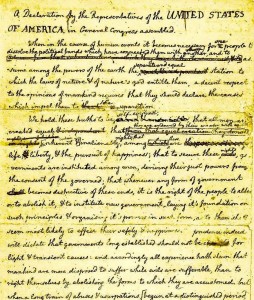
Draft of the Declaration, with Franklin’s and others’ edits
Jefferson’s draft was powerful but wordy. Franklin edited it; the Committee of Five submitted it; the Congress tweaked it more.
The Declaration was ratified on July 2, and published on July 4.
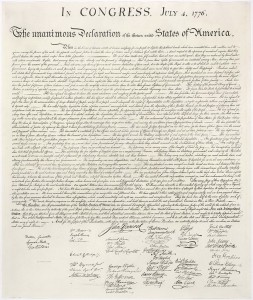
The Broadside Edition of the Declaration of Independence, published on July 5, 1776.
Note that of the 1,338 words of the Declaration, the first 1,180 are all about the WHY and the HOW.
The WHAT, the text of the actual resolution of the Congress, appears only in the last paragraph and consists of only 127 words:
“We, therefore, the Representatives of the united States of America, in General Congress, Assembled, appealing to the Supreme Judge of the world for the rectitude of our intentions, do, in the Name, and by Authority of the good People of these Colonies, solemnly publish and declare, That these United Colonies are, and of Right ought to be Free and Independent States; that they are Absolved from all Allegiance to the British Crown, and that all political connection between them and the State of Great Britain, is and ought to be totally dissolved; and that as Free and Independent States, they have full Power to levy War, conclude Peace, contract Alliances, establish Commerce, and to do all other Acts and Things which Independent States may of right do.”
And the Declaration closes with the final 31 words:
“And for the support of this Declaration, with a firm reliance on the protection of divine Providence, we mutually pledge to each other our Lives, our Fortunes and our sacred Honor.”
Rivals and Friends
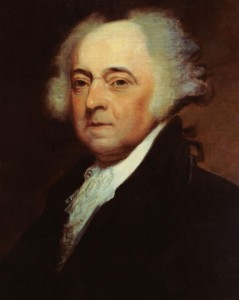
John Adams as the second President of the United States
Adams never quite got over missing the chance to get credit for the Declaration. He went on to become the first Vice President and second President; Jefferson to be the first Secretary of State and third President.
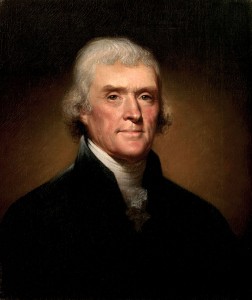
Thomas Jefferson as the third President of the United States
History continues to view Jefferson — with all his flaws and contradictions — more favorably than Adams.
The two were fierce political rivals until both left office; then they became fast friends, frequently corresponding with each other (as only former presidents can do).
But Adams continued to envy Jefferson.
And both died on the same day, exactly 50 years after the Declaration was published, on July 4, 1826, exactly 190 years ago today.
According to legend, Adams, on his deathbed and unaware that Jefferson had died several hours earlier, lamented that Jefferson would outlive him.
He uttered this deathbed regret:
“Jefferson Lives!”
Of course, he was right.
Below, for reference, the final version of the Declaration of Independence.
……………………………………..
IN CONGRESS, July 4, 1776.
The unanimous Declaration of the thirteen united States of America,
When in the Course of human events, it becomes necessary for one people to dissolve the political bands which have connected them with another, and to assume among the powers of the earth, the separate and equal station to which the Laws of Nature and of Nature’s God entitle them, a decent respect to the opinions of mankind requires that they should declare the causes which impel them to the separation.
We hold these truths to be self-evident, that all men are created equal, that they are endowed by their Creator with certain unalienable Rights, that among these are Life, Liberty and the pursuit of Happiness.–That to secure these rights, Governments are instituted among Men, deriving their just powers from the consent of the governed, –That whenever any Form of Government becomes destructive of these ends, it is the Right of the People to alter or to abolish it, and to institute new Government, laying its foundation on such principles and organizing its powers in such form, as to them shall seem most likely to effect their Safety and Happiness. Prudence, indeed, will dictate that Governments long established should not be changed for light and transient causes; and accordingly all experience hath shewn, that mankind are more disposed to suffer, while evils are sufferable, than to right themselves by abolishing the forms to which they are accustomed. But when a long train of abuses and usurpations, pursuing invariably the same Object evinces a design to reduce them under absolute Despotism, it is their right, it is their duty, to throw off such Government, and to provide new Guards for their future security.–Such has been the patient sufferance of these Colonies; and such is now the necessity which constrains them to alter their former Systems of Government. The history of the present King of Great Britain is a history of repeated injuries and usurpations, all having in direct object the establishment of an absolute Tyranny over these States. To prove this, let Facts be submitted to a candid world.
He has refused his Assent to Laws, the most wholesome and necessary for the public good.
He has forbidden his Governors to pass Laws of immediate and pressing importance, unless suspended in their operation till his Assent should be obtained; and when so suspended, he has utterly neglected to attend to them.
He has refused to pass other Laws for the accommodation of large districts of people, unless those people would relinquish the right of Representation in the Legislature, a right inestimable to them and formidable to tyrants only.
He has called together legislative bodies at places unusual, uncomfortable, and distant from the depository of their public Records, for the sole purpose of fatiguing them into compliance with his measures.
He has dissolved Representative Houses repeatedly, for opposing with manly firmness his invasions on the rights of the people.
He has refused for a long time, after such dissolutions, to cause others to be elected; whereby the Legislative powers, incapable of Annihilation, have returned to the People at large for their exercise; the State remaining in the mean time exposed to all the dangers of invasion from without, and convulsions within.
He has endeavoured to prevent the population of these States; for that purpose obstructing the Laws for Naturalization of Foreigners; refusing to pass others to encourage their migrations hither, and raising the conditions of new Appropriations of Lands.
He has obstructed the Administration of Justice, by refusing his Assent to Laws for establishing Judiciary powers.
He has made Judges dependent on his Will alone, for the tenure of their offices, and the amount and payment of their salaries.
He has erected a multitude of New Offices, and sent hither swarms of Officers to harrass our people, and eat out their substance.
He has kept among us, in times of peace, Standing Armies without the Consent of our legislatures.
He has affected to render the Military independent of and superior to the Civil power.
He has combined with others to subject us to a jurisdiction foreign to our constitution, and unacknowledged by our laws; giving his Assent to their Acts of pretended Legislation:
For Quartering large bodies of armed troops among us:
For protecting them, by a mock Trial, from punishment for any Murders which they should commit on the Inhabitants of these States:
For cutting off our Trade with all parts of the world:
For imposing Taxes on us without our Consent:
For depriving us in many cases, of the benefits of Trial by Jury:
For transporting us beyond Seas to be tried for pretended offences
For abolishing the free System of English Laws in a neighbouring Province, establishing therein an Arbitrary government, and enlarging its Boundaries so as to render it at once an example and fit instrument for introducing the same absolute rule into these Colonies:
For taking away our Charters, abolishing our most valuable Laws, and altering fundamentally the Forms of our Governments:
For suspending our own Legislatures, and declaring themselves invested with power to legislate for us in all cases whatsoever.
He has abdicated Government here, by declaring us out of his Protection and waging War against us.
He has plundered our seas, ravaged our Coasts, burnt our towns, and destroyed the lives of our people.
He is at this time transporting large Armies of foreign Mercenaries to compleat the works of death, desolation and tyranny, already begun with circumstances of Cruelty & perfidy scarcely paralleled in the most barbarous ages, and totally unworthy the Head of a civilized nation.
He has constrained our fellow Citizens taken Captive on the high Seas to bear Arms against their Country, to become the executioners of their friends and Brethren, or to fall themselves by their Hands.
He has excited domestic insurrections amongst us, and has endeavoured to bring on the inhabitants of our frontiers, the merciless Indian Savages, whose known rule of warfare, is an undistinguished destruction of all ages, sexes and conditions.
In every stage of these Oppressions We have Petitioned for Redress in the most humble terms: Our repeated Petitions have been answered only by repeated injury. A Prince whose character is thus marked by every act which may define a Tyrant, is unfit to be the ruler of a free people.
Nor have We been wanting in attentions to our Brittish brethren. We have warned them from time to time of attempts by their legislature to extend an unwarrantable jurisdiction over us. We have reminded them of the circumstances of our emigration and settlement here. We have appealed to their native justice and magnanimity, and we have conjured them by the ties of our common kindred to disavow these usurpations, which, would inevitably interrupt our connections and correspondence. They too have been deaf to the voice of justice and of consanguinity. We must, therefore, acquiesce in the necessity, which denounces our Separation, and hold them, as we hold the rest of mankind, Enemies in War, in Peace Friends.
We, therefore, the Representatives of the united States of America, in General Congress, Assembled, appealing to the Supreme Judge of the world for the rectitude of our intentions, do, in the Name, and by Authority of the good People of these Colonies, solemnly publish and declare, That these United Colonies are, and of Right ought to be Free and Independent States; that they are Absolved from all Allegiance to the British Crown, and that all political connection between them and the State of Great Britain, is and ought to be totally dissolved; and that as Free and Independent States, they have full Power to levy War, conclude Peace, contract Alliances, establish Commerce, and to do all other Acts and Things which Independent States may of right do
And for the support of this Declaration, with a firm reliance on the protection of divine Providence, we mutually pledge to each other our Lives, our Fortunes and our sacred Honor.


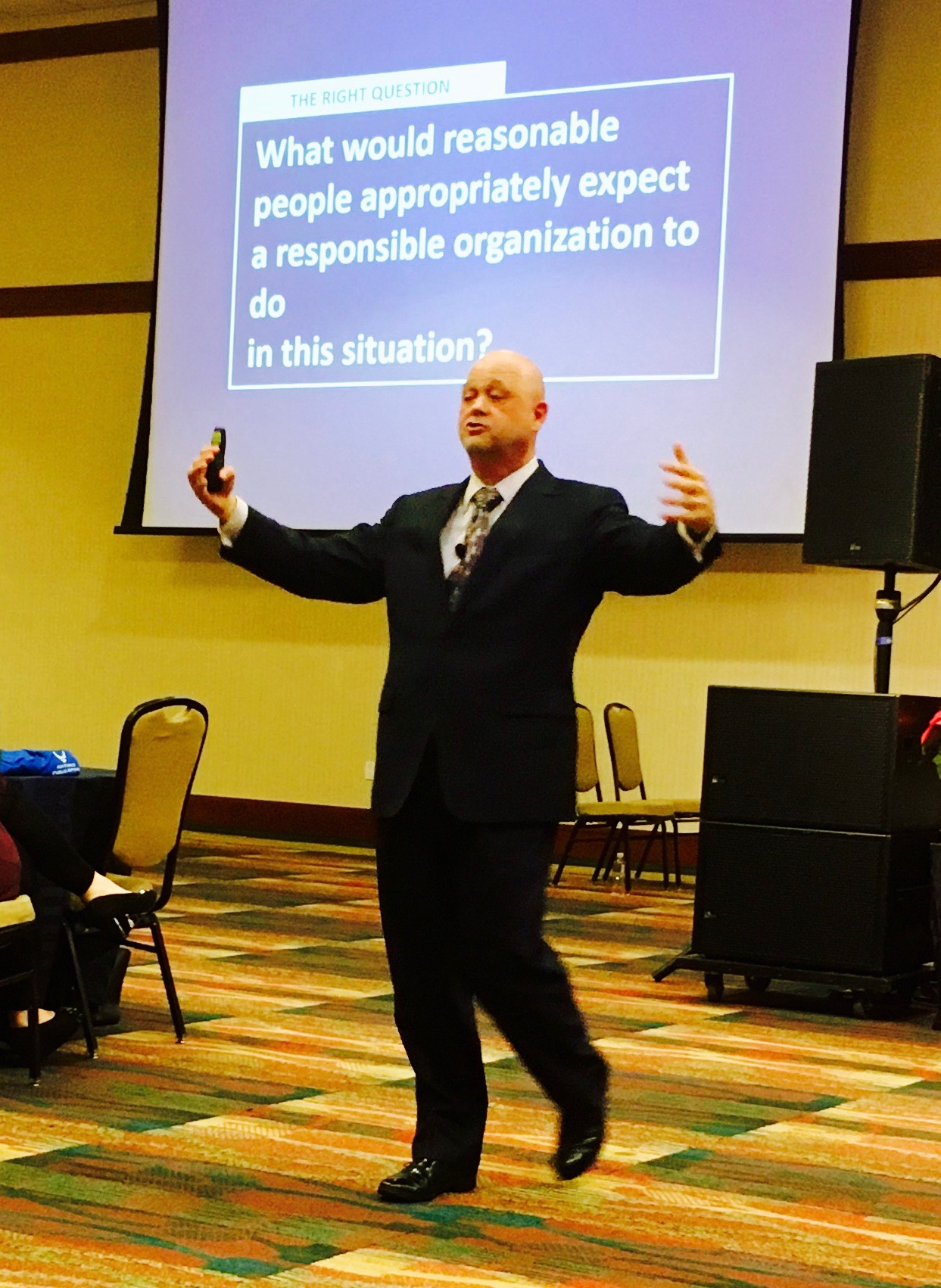
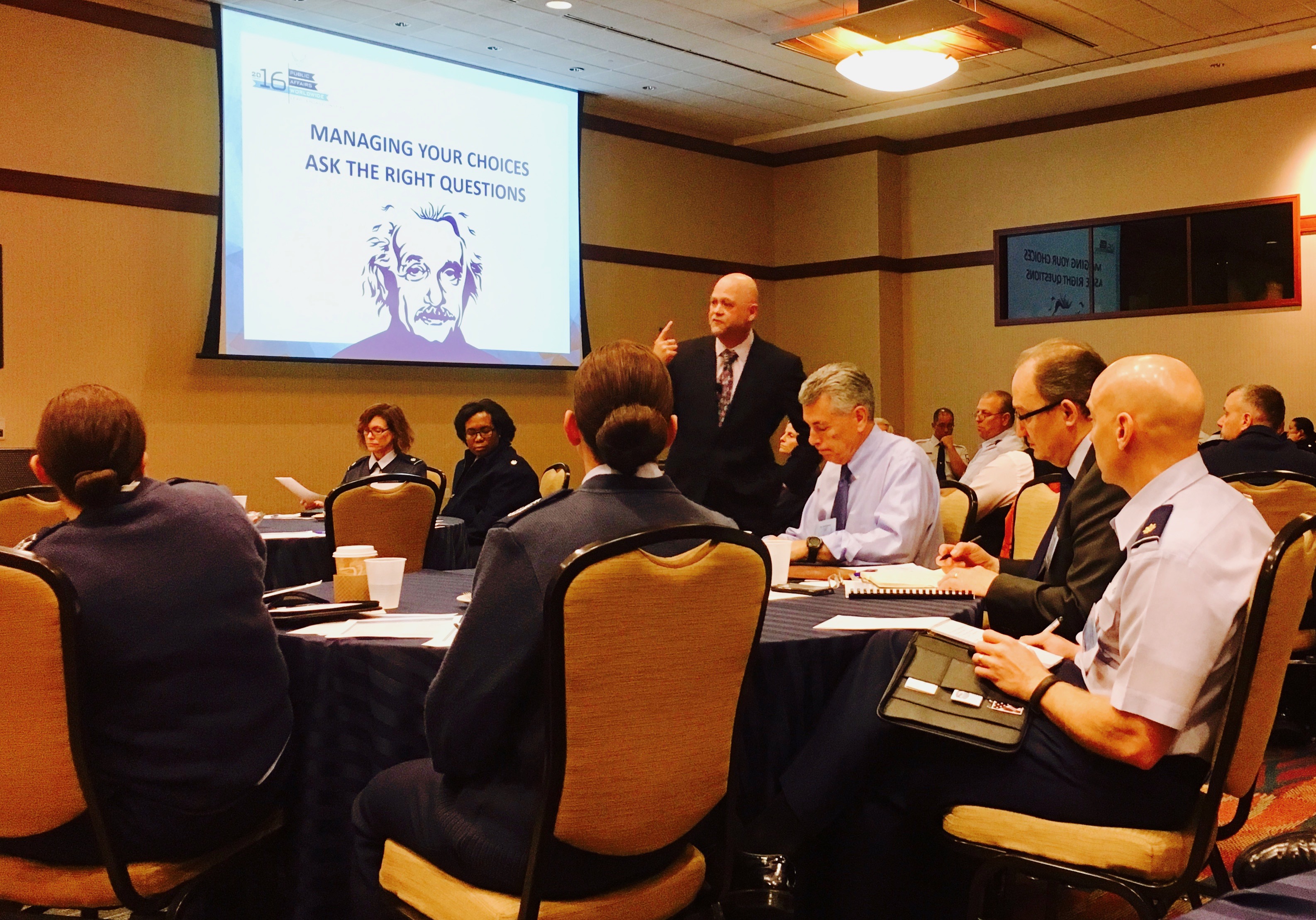




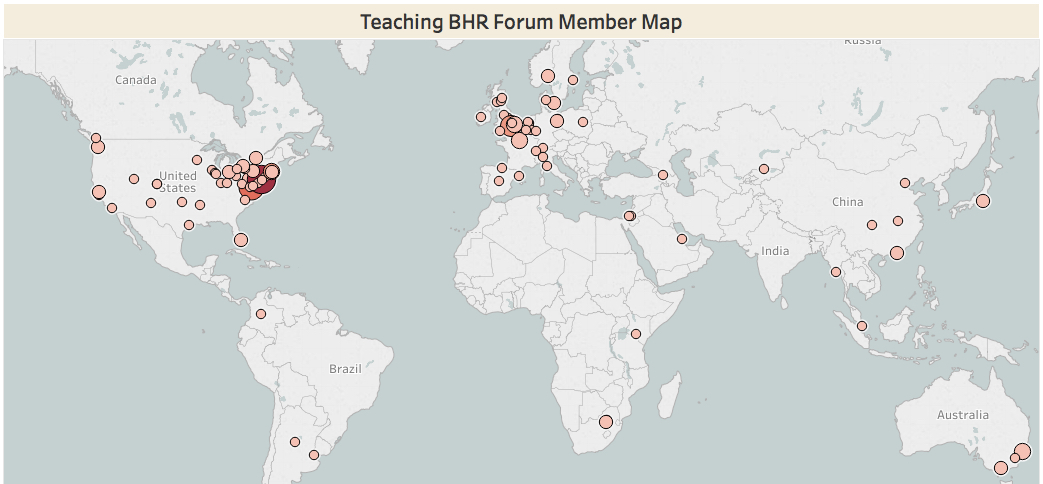




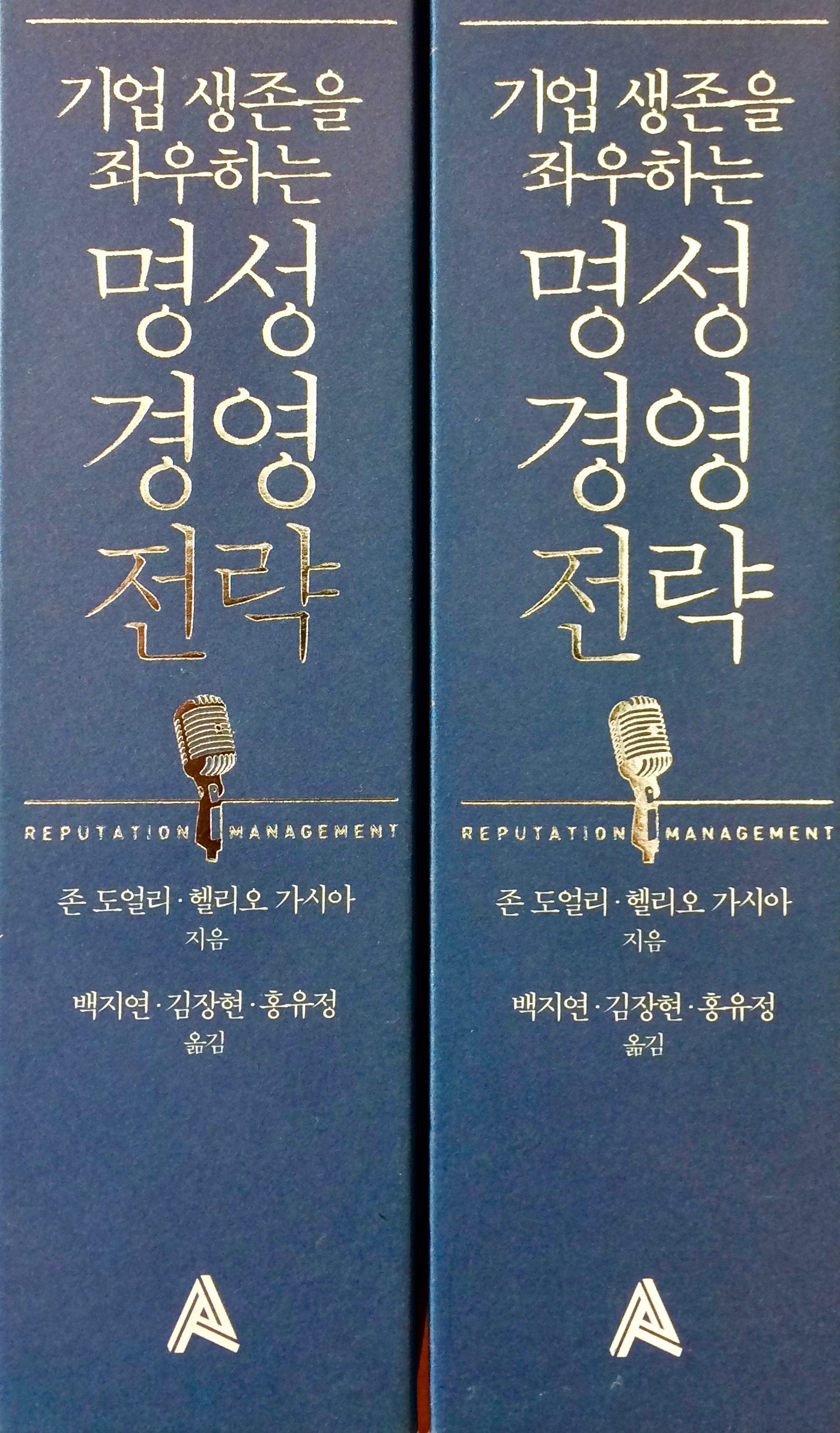
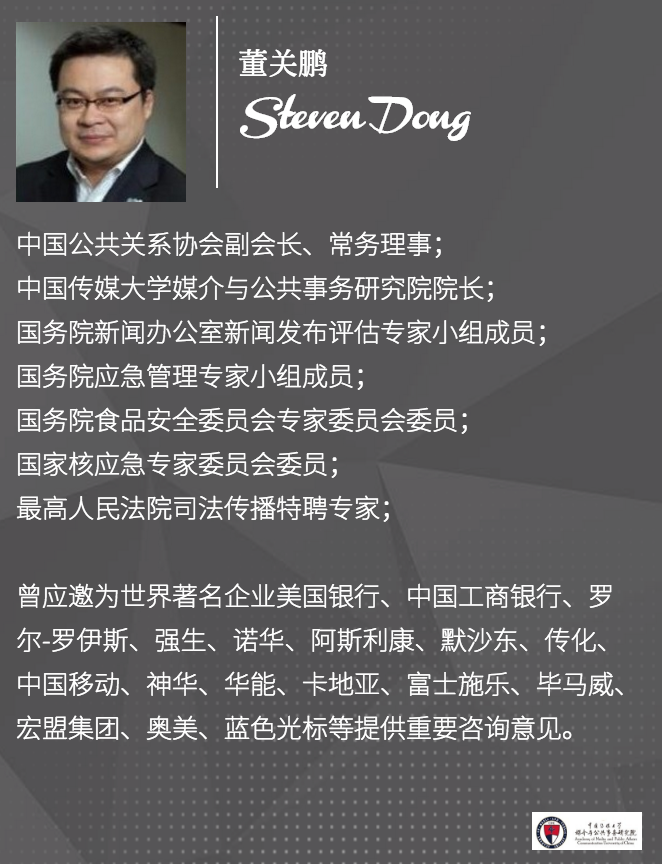



 Brand loyalty is more likely to help a brand under conditions in the left column (green), and more likely to harm one under conditions in the right column (red).
Brand loyalty is more likely to help a brand under conditions in the left column (green), and more likely to harm one under conditions in the right column (red).





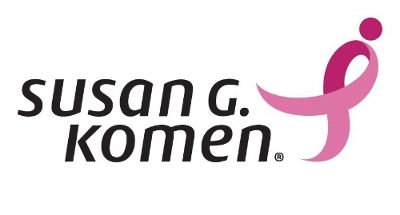 On January 31, 2012, the Susan G Komen Foundation announced its decision to stop funding Planned Parenthood.
On January 31, 2012, the Susan G Komen Foundation announced its decision to stop funding Planned Parenthood.


